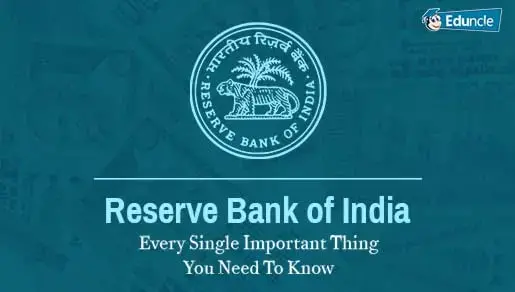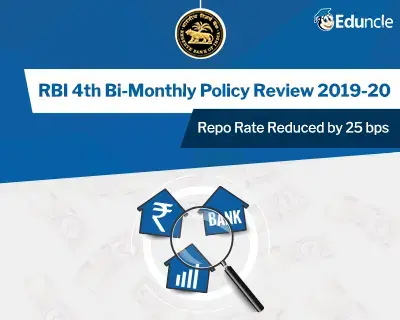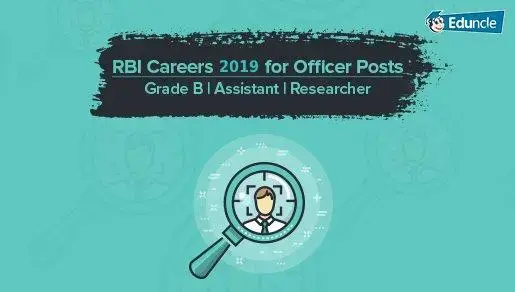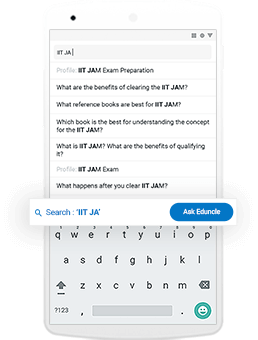
Reserve Bank of India (RBI) is the central banking and monetary authority of India. The loans which the banks and non-banking financial institutions offer to government entities, businesses, and consumers, are controlled by the Reserve Bank of India (RBI).
Here in this blog, you can get every single detail about RBI like - Its functionality, policies, organizational structure and other important facts.
Please follow the links given below to obtain the complete knowledge -
Organizational Structure of RBI
Role of RBI in developing the Economy
Policy Rates and Reserve Ratios
Important Facts Related to RBI.
Is RBI your dream place to work? Then you will be surely interested in - How to get a job in RBI?
What is RBI?
The Reserve Bank of India (RBI) is the central bank of India. RBI was established on April 1, 1935, under the Reserve Bank of India Act. The RBI maintains the financial stability in the country and its economy by using monetary and also regulates the currency and credit systems of the country.
How RBI can be defined?
We can define RBI with the help of the following definitions: -
The Reserve Bank of India (RBI) is India's Central Banking Institution, which controls the Monetary Policy of the Indian Rupee.
The Reserve Bank of India (RBI) is India's central banking and monetary authority, which controls the loans offered by banks and non-banking financial institutions to government entities, businesses, and consumers and controls the availability of funds in the financial system for credit.
The Reserve Bank of India (RBI) is an institution which regulates and supervises the financial system and prescribes broad parameters of banking operations within which the Indian banking and financial system functions.
How RBI came into existence?
Today you understand RBI as central banking institution that maintains the flow of money in the economy, regulates the offering of loans, issue currency notes. But you all might be interested in knowing the History of RBI and some of the following questions might be arising in your mind: -
How RBI made its existence in the Indian economy?
What idea made realizing the need for an institution like RBI?
What was the starting structure of RBI?
When it got established?
When and how it transformed in the manner we see it today? etc.
To get answers to all the questions, we need to understand the historical aspects of the formation of RBI. The history of RBI will also help us to know how effective and influential is the role of RBI in manipulating the experiences of an economy over the years.
You will get all the answers to your questions regarding the RBI history, with the help of the following details.
Step by Step Benchmarks in the Foundation/Establishment of RBI
 In the year 1926, the Hilton-Young Commission (Royal Commission on Indian Currency and Finance) recommended the idea of creating a central bank for India.
In the year 1926, the Hilton-Young Commission (Royal Commission on Indian Currency and Finance) recommended the idea of creating a central bank for India.
In the year 1927, a bill was introduced in the Legislative Assembly to accomplish the recommendation given by the Hilton-Young Commission, which was later withdrawn due to lack of agreement among various sections of people.
In the year 1933, the White Paper on Indian Constitutional Reforms recommended the creation of a Reserve Bank. A fresh bill was introduced in the Legislative Assembly.
In the year 1934, the Bill was passed and received the Governor General’s assent.
In the year 1935, on April 1, Reserve Bank started its operations as India’s central bank and a private shareholders’ bank with a paid up capital of rupees five crores. It was also to respond to economic troubles after the First World War.
In the year 1942 Reserve Bank ceased to be the currency issuing authority of Burma (now Myanmar) because of the Japanese occupation of Burma (1942–45).
In the year 1947, Reserve Bank permanently stopped acting as banker to the Government of Burma.
In the year 1948, Reserve Bank stopped rendering central banking services to Pakistan, when the State Bank of Pakistan commenced operations.
In the year 1949, the Reserve Bank was nationalized by the Government of India, under the Reserve Bank (Transfer of Public Ownership) Act, 1948.
In the year 1949, Banking Regulation Act was passed.
In the year 1951, India entered the Planning Era. In this period Prime Minister Jawaharlal Nehru developed a centrally planned economic policy focusing the agricultural sector.
In the year 1961, on 7 December, the RBI established a deposit insurance system, as a result of bank crashes for restoring the trust in the national bank system.
In the year 1966, the Cooperative Banks came within the regulations of the RBI. The rupee was devaluated for the first time.
In the year 1969, a turning point came in the history of Indian Banking with the Nationalization of 14 Commercial Banks by the government headed by Indira Gandhi.
In the year 1973, the exchange control was strengthened with the amendment of the Foreign Exchange Regulation Act.
In the year 1974, the Priority Sector Advance Targets started getting fixed.
In 1975, Regional Rural Banks established.
In the year 1985, the period of Financial Market Reforms in India was started by the Sukhamoy Chakravarty and Vaghul Committee reports.
In the year 1991, India came under the Balance of Payment crisis and RBI pledged Gold to shore up reserves and the Indian Rupee was devaluated. The currency lost 18% relative to the US dollar.
In the year 1991-92, Economic Reforms started in India. In 1993, Exchange Rate became Market determined.
In the year 1994, Board for Financial Supervision was set up to undertake consolidated supervision of the financial sector comprising commercial banks, financial institutions and non- banking finance companies.
In the year 1997, the regulation of the Non-Banking Financial Companies (NBFC) got strengthened.
In the year 1998, Multiple Indicator Approach for monetary policy was adopted for the first time.
In the year 2000, the Foreign Exchange Management Act (FEMA) replaced the erstwhile FERA.
In the year 2002, The Clearing Corporation of India Ltd started its operation.
In the year 2003, Fiscal Responsibility and Budget Management Act (FRBMA) enacted.
In the year 2004, Liquidity Adjustment Facility (LAF) and Real Time Gross Settlement (RTGS) started working fully. The Market Stabilization Scheme (MSS) was also launched.
In the year 2006, Reserve Bank of India was authorized to regulate the money, forex, G-Sec and Gold related security markets.
In the year 2007, Reserve bank of India was authorized to regulate the Payment systems.
In the year 2008–2009, the national economy's growth rate came down to 5.8% and the RBI promoted the economic development.
Organizational Structure of RBI

The organizational structure of RBI is divided into the following three parts: -
I. Central Board of Directors
II. Local Boards
III. Offices of RBI
I. Central Board of Directors
The organization and management of RBI is regulated by the Central Board of Directors. The Central Board of Directors is the main committee of the Central Bank. The directors are appointed by the government for a term of 4 years. Central Board of Directors consists Official Directors and Non-Official Directors, which can be elaborated as follows: -
Official Directors of RBI
The Governor and Deputy Governor of RBI are its full-time official directors. The structure can be explained as below:
One Governor: It is the highest authority of RBI, appointed by the Government of India for a term of 5 years. He can be re-appointed for another term. Current Governor of Reserve Bank of India is Dr Urjit Patel.
Four Deputy Governors: Four Deputy Governors are nominated by Central Govt. for a term of 5 years. Current Deputy Governors are: -
S.S.Mundra
B.P.Kanungo
N.S.Vishwanathan
Viral Acharya
Non-Official Directors of RBI
There are 16 non-official directors in RBI. Out of them, there are 4 Non-official Directors representing the local Boards located in Delhi, Chennai, Kolkata and Mumbai representing 4 regions of India. 2 directors are selected from the Ministry of Finance.
Rest 10 non-official directors are nominated by the Reserve Bank of India for a duration of 4 years. These directors are experts from various segments of Indian Economy. Minimum 6 meetings every year are taken by the central board of directors.
II. Local Boards
To help the working of the central board, there are also four local boards working for four regional areas with their headquarters at Mumbai, Kolkata, Chennai, and New Delhi. These four local boards represent four regions of the country. These local boards have five members each. These members are appointed by the central Government for a term of 4 years to represent territorial and economic interests and the interests of co-operative and indigenous banks.
These local boards perform the duties assigned by the Central Board and also to advise the Central Board on the specific and general issues.
Departments: RBI has 34 departments to focus on policy issues in the Reserve Bank’s functional areas and internal operations.
III. Offices of RBI
The head office RBI is situated in Mumbai. The offices of local boards are situated in Delhi, Kolkata and Chennai. To bring smooth and effective working of the banking system, regional branches or offices have been opened by RBI. These local offices are opened by RBI with the permission of the government of India. Most of the regional offices are situated in the capital cities of states.
Presently RBI has regional offices in Ahmedabad, Bangalore, Bhopal, Bhubaneshwar, Chandigarh, Guwahati, Hyderabad, Jaipur, Jammu, Kanpur, Nagpur, Patna, Thiruvananthapuram, Kochi, Lucknow and Byculla (Mumbai).
Other than these, RBI has 11 Sub-Offices also which are - Agartala, Aizawal, Dehradun, Gangtok, Imphal, Panaji, Raipur, Ranchi, Shillong, Shimla, Srinagar.
Those places which don’t have offices of RBI are represented by the State Bank of India and its associate banks as the agents of RBI.
Training Centres of RBI: -
1. The Reserve Bank Staff College, Chennai.
2. College of Agricultural Banking, Pune.
3. Zonal Training Centres, located at regional offices, train non-executive staff.
RBI funded Research Institutions: -
1. National Institute of Bank Management (NIBM), Pune.
2. Indira Gandhi Institute of Development Research (IGIDR), Mumbai.
3. Institute for Development and Research in Banking Technology (IDRBT), Hyderabad.
RBI’s Subsidiaries: -
1. Deposit Insurance and Credit Guarantee Corporation (DICGC).
2. National Housing Bank Bharatiya Reserve Bank Note Mudran Private Limited (BRBNMPL).
3. National Bank for Agriculture and Rural Development (NABARD).
Functions of RBI
RBI is the Central bank, and being the central bank RBI has significant powers and duties to perform. For the smooth working of the banking system and economy, RBI has to perform functions like maintaining monetary and financial ability for the stability of payment system.
The functions of RBI can be understand as the following categories: -
I. Monetary functions
As you know that RBI is a monetary authority, therefore RBI has to perform some monetary functions, which are highly correlated with the system and structure of the monetary system in the country. The monetary functions of RBI are as follows: -
1. Monopoly of Currency Notes: - Being a Central Bank, RBI has the sole authority for issuing currency in India. RBI has a department for money issue called “Issue Department”. RBI supply money in the economy on the basis of certain conditions. For instance, a portion of the total money supply will be held with RBI in the form of assets such as gold, bullion etc.
Notes in the denominations of two, five, ten, twenty, fifty, one hundred, five hundred, and one thousand are issued by RBI. Earlier, notes of higher denominations were also issued. But, in order to inhibit users from indulging in black-market operations, the issuance of these notes was stopped.
RBI has two departments, the Issue Department and the Banking Department. The function of the issue department is to issue currency. And the function of the banking department is to look after the banking operations.
2. Banker to Government: - To both the central government and state governments, RBI acts as the Banker. RBI performs functions like collecting taxes, making payments on behalf of central government, maintain debt of public union, provides loans to the government without securities (up to three months) etc.
RBI also advises the government on matters related to banking and finance, international finance, financing of five-year plans, mobilizing resources, and banking legislation.
3. Bankers' Bank and Lender of Last Resort: - As RBI is banker’s bank, RBI can issue licenses and other permissions to new banks. The rules and regulation given by RBI should be followed by all the banks in India. These rules and regulations of RBI can be related to reserve ratio, bank rate, repo rate and reverse repo rate etc. RBI also collect precautionary deposits from commercial banks and thus also act as a clearing houses.
4. Credit Controller: - Credit control is the most important function of RBI. RBI controls the economy by adopting many policies incorporating other banks like changing interest rates, SLR, CRR etc. Credit control is important so that the quantity and the flow of money in the economy can be maintained. RBI maintains the flow of money in the economy, by regularly changing interest and other parameters.
5. A Controller of Foreign Exchange Operations: - When it comes to Foreign Exchange Operations, RBI acts as the authorized dealer in foreign exchange, gold coin, bullion etc. on behalf of the government. In order to control foreign exchange operations of the country, RBI is the authorized agent. RBI also maintains the equilibrium between Balance of Trade and Balance of Payment Accounts.
II. Non- monetary functions
RBI also performs some non-monetary functions which can be classified as follows: -
1. Supervisory Functions: - RBI also supervises all the banks in India as it acts as banker to all the banks. In order to supervise banks, RBI can use RBI Act and can further issue rules and regulations. Now, to control and supervise the commercial banks RBI has set up a department called “Department of Supervision”.
2. Promotional functions: - RBI is the central bank of India, therefore RBI has to maintain the balance in the economy of the society by boosting the rural area of India. To promote rural area’s agriculture, small industries, RBI provides many promotional schemes to create employment opportunity by establishing financial institutions, conducting surveys etc.
For achieving these target RBI take help from NABARD, Regional Rural Banks (RRB), as these banks are dedicated to rural areas. RBI is also promoting industrial fields by establishing financial institutions like Unit Trust of India (UTI). The main motive of RBI to improve these sectors is to create a good atmosphere for industries and employment to achieve a developed society.
III. Miscellaneous functions
Along with the Monetary and Non-Monetary functions, the RBI has to perform some other important functions:
1. RBI collects data related to Indian economy and publishing those via media.
2. RBI offers its own specialized institutions to youngsters who are enthusiastic in the banking field.
3. Many innovative fields of studies are introduced by RBI. College of Agricultural Finance at Pune is one of them.
Role of RBI in developing the Economy
The role of RBI in the Indian Economy is very important. The RBI has been performing its role as a promoter of the financial system since its establishment. The role of RBI in various sectors of the economy can be understood by the following points: -
1. Growth of Financial System: The financial system of the country includes the financial institutions, financial markets and financial instruments. The more efficient the financial system of the country will be, the more economic development of the country will be possible.
The RBI has established many banking and non-banking institutions to fulfil the credit requirements of diverse sectors of the economy.
2. Growth in Agriculture Sector: India is an agriculture-based country. So in order to develop the Indian Economy, the development of agriculture sector is a must. RBI plays a very important role in order to develop the Agriculture Sector of the country.
RBI has successfully rendered service for the growth of agriculture by increasing the flow of credit to this sector. RBI is having the Agriculture Refinance and Development Corporation (ARDC) to look after the credit, National Bank for Agriculture and Rural Development (NABARD) and Regional Rural Banks (RRBs) to help for the purpose.
3. Growth in Industrial Finance: The key to faster economic growth is fast industrial growth. For this RBI provide the adequate and timely availability of credit to the small, medium and large industry. For this RBI has also set up special financial institutions such as ICICI Ltd. IDBI, SIDBI and EXIM BANK etc.
4. Training Programs: RBI also provide essential training to the staff of the banking industry. In this regard, RBI has set up the bankers' training colleges at several places. National Institute of Bank Management (NIBM), Bankers Staff College (BSC) and College of Agriculture Banking (CAB).
5. Collection of Data: RBI is the apex monetary authority of the country, therefore the RBI collects process and disseminates statistical data related to interest rate, inflation, savings and investments etc. These data are very useful for researchers and policy makers.
6. Publication of the Reports: RBI has its separate publication division to publish data on several sectors of the economy. The reports and bulletins are regularly published by the RBI including RBI weekly reports, RBI Annual Report, Report on Trend and Progress of Commercial Banks India., etc. This information is made available to the public also at cheaper rates.
7. Developing Banking Habits: RBI plays an important role in promoting the banking habits in the country. RBI collects the data regarding savings and takes measures for an expansion of the banking network.
Many institutions like the Deposit Insurance Corporation-1962, UTI-1964, IDBI-1964, NABARD-1982, NHB-1988, etc. has been set up by RBI to develop and promote banking habits among the country people.
8. Growth in Export: The RBI also play a very important role in expanding the exports from the country. The Export-Import Bank of India (EXIM Bank India) and the Export Credit Guarantee Corporation of India (ECGC) are supported by refinancing their lending for export purpose.
Policy Rates and Reserve Ratios
Reserve Bank of India (RBI) has decided some Policy Rates and Reserve Ratios to control the supply of money in the economy. RBI maintains price stability to achieve high economic growth with the help of these Policy Rates and Reserve Ratios. Various Policy Rates and Reserve Ratios decided by RBI are categorized as follows: -
1. Bank Rate: This is the rate at which RBI lends money to other banks or financial institutions. The bank rate signals the central bank’s long-term outlook on interest rates.
If the bank rate moves up, long-term interest rates also tend to move up, and vice-versa.
2. Repo rate: Repo rate is the rate at which banks borrow funds from the RBI to meet the gap between the demand they are facing for money (loans) and how much they have on hand to lend.
If the RBI wants to make it more expensive for the banks to borrow money, it increases the repo rate; similarly, if it wants to make it cheaper for banks to borrow money, it reduces the repo rate.
3. Reverse Repo rate: This is the exact opposite of repo rate. It is the rate at which RBI borrows money from the banks (or banks lend money to the RBI) is termed the reverse repo rate. The RBI uses this tool when it feels there is too much money floating in the banking system.
If the reverse repo rate is increased, it means the RBI will borrow money from the bank and offer them a profitable rate of interest. As a result, banks would prefer to keep their money with the RBI instead of lending it out.
4. CRR - Cash Reserve Ratio: The cash reserve ratio (CRR), refers to a portion of deposits (as cash) which banks have to keep/maintain with the RBI. This serves two purposes. It ensures that a portion of bank deposits is totally risk-free and secondly it enables that RBI control liquidity in the system, and thereby, inflation by tying their hands in lending money.
5. SLR - Statutory Liquidity Ratio: Besides the CRR, banks are required to invest a portion of their deposits in government securities as a part of their statutory liquidity ratio (SLR) requirements. What SLR does is again restrict the bank’s leverage in pumping more money into the economy.
6. MSF - Marginal Standing facility: Marginal Standing Facility (MSF) is the rate at which the banks are able to borrow overnight funds from RBI against the approved government securities. It is a new Liquidity Adjustment Facility (LAF) window created by Reserve Bank of India in its credit policy.
7. Call Rate: Call rate is the interest rate paid by the banks for lending and borrowing for daily fund requirement. Since banks need funds on a daily basis, they lend to and borrow from other banks according to their daily or short-term requirements on a regular basis.
Feeling confused by all these banking terma? Beat your doubts with the detailed section of all Important banking terms – SBI, IBPS PO/ Clerk/ SO/ RRB Exam
Current Policy rates and reserve ratios
| Bank Rate | 6.25% |
| Repo Rate | 6% |
| Reverse Repo Rate | 5.75% |
| Cash Reserve Ratio (CRR) | 4% |
| Statutory Liquidity Ratio (SLR) | 19.50% |
| Marginal Standing Facility (MSF) | 6.25% |
Important facts related to RBI
Name of the Central Bank of India is Reserve Bank of India.
There is only one Central Bank in India and that is Reserve Bank of India.
The RBI logo was inspired from the East India Company Double Mohur.
Emblem of RBI is Panther and Palm Tree.
RBI was formed on April 1, 1935 as a private entity, but now it’s a government entity. Nationalization of the central bank did not happen till 1949.
The financial year of RBI is from 1 July to 30 June.
RBI is responsible only for printing the currency notes. Minting of coins is done by the Government of India.
The first woman to become the deputy governor of RBI is K. J. Udeshi. She was appointed in 2003.
RBI demonetized notes in the denominations of five thousand rupees (Rs. 5,000) and ten thousand rupees (Rs. 10,000) in 1938. They were reintroduced in 1954 and again demonetized in 1978.
RBI again demonetized the 500 and 1000 rupee notes on 8th November 2016 and introduced new notes replacing the old ones. RBI can print these notes according to the RBI act of 1934.
RBI was also the central bank for two other countries. It played the role of Central Bank of Pakistan till June 1948 and the Central Bank of Burma (Myanmar) till April 1947.
The bank was established on the recommendation of the Hilton Young Commission.
RBI does not have second class employees. It has 17000 Class I, Class III & Class IV employees.
Manmohan Singh is the only Prime Minister, who also served as the Governor of RBI.
The first Indian to hold the position of the Governor of RBI was Mr C.D. Deshmukh. He was the third governor of RBI.
RBI has 30 offices in India which are mostly located in the state capitals.
RBI runs a Monetary Museum in the premises of the Mumbai head office.
You can also refer to the following articles provided by Eduncle, to get more knowledge about the Banking structure of India.
To get more information and study tips, follow and subscribe our YouTube Channel.
For interesting Daily Quizzes and Amazing Facts related to the banking sector, like our Facebook page.

















